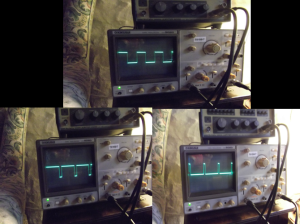So, after pondering for weeks and weeks on what to post in this blog I decided to pick up where I left off with a project I started nearly 2 years ago for my HND.
I decided to bite off more than I could chew and went head first into the world of the DIY synth. My aim was to build a simple analogue synthesizer consisting of a single oscillator, filter and amplifier. As a big fan of the good old synth, digital or analogue, this was not enough, so it had to consist of all the bells and whistles and be able to make me a coffee (because my girlfriend is a lazy so and so). In the end I wanted my final design to include multiple oscillators, LFOs, variable filter responses, multiple ADSRs, effects processors and so many routing capabilities it will put the spaghetti junction to shame.
I would say I’m ¼ of the way there, I have a great collection of schematics to leech off and change to my personal preference and I also have the main body of the synth working and on bread board with a couple of guitar effects to add in to the circuitry. It has been sitting for nearly a year now doing nothing so now is the time to get back on it and share the love.
I’ll start off with going through the basic building blocks and circuitry needed to construct the device and reminisce the anguish of learning how to transfer a schematic diagram on to strip board. I will also talk over certain chips and ICs I used and why they are necessary in the circuits.
Stay tuned and be prepared to be bored to death, unless this is what you’re into..
Cheers n’ gone.




